#Chukchi
Explore tagged Tumblr posts
Text

Chukchi woman, Russia, by Kamcnt
#chukchi#russia#asia#north asia#folk clothing#traditional clothing#traditional fashion#cultural clothing
633 notes
·
View notes
Text
Whale hunt dance in Chukotka
#chukotka#chukchi#indigenous#culture#indigenous russian#indigenous russia#important#russia#fypシ#fypage#colonization#landback#siberian#siberia#siberian indigenous#indigenous siberian#indigenous art#indigenous rights#indigenous people#indigenous music#indigenous culture#Indigenous dance
731 notes
·
View notes
Text
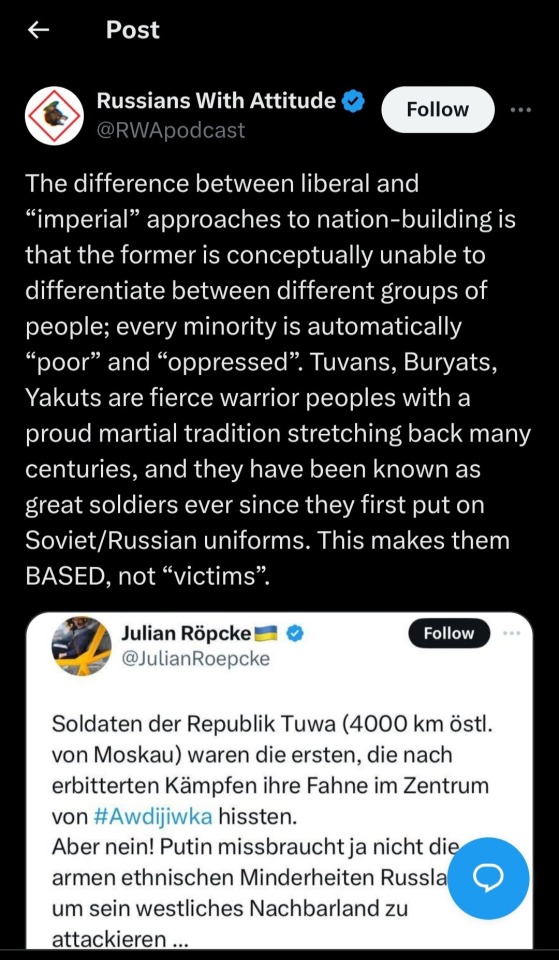
Russians pretending like the way they treat their ethnic minorities is some sort of Gold standard is fucking comical. Yes, Buryats, Tuvans and other ethnic minority groups being disproportionately mobilised in an imperial war by their coloniser so privileged Muscovites can never face the war themselves is so BASED ! Tell that to all of those Buryats/Kalmyks/Tuvans etc protesting and fleeing the country to escape being drafted.
Anyways

So "BASED"!
#Russia#russian invasion#Ukraine#Russian imperialism#russian colonialism#russian agression#Buryatia#Tuva#Kalmykia#Chukotka#Nenets#Chukchi#indigenous russia#The Russian couldn't even stop themselves from being racist in the tweet what the fuck is “fierce warrior people” oh my god
79 notes
·
View notes
Text
Please help if you can! Anything counts!
#gofundme#donate#donate if you can#indigenous#indigenous rights#native#bipoc#bipoc representation#poc#fundraiser#need help#please help#intersex rights#intersex#queer#aroace#aromantic#asexual#indigenous couple#two spirit#siberian native#khanty#chukchi
10 notes
·
View notes
Text

The #Chukchi, or Chukchee (Chukot: #Ԓыгъоравэтԓьэт, О'равэтԓьэт, Ḷygʺoravètḷʹèt, O'ravètḷʹèt), are a Siberian ethnic group native to the Chukchi Peninsula, the shores of the Chukchi Sea and the Bering Sea region of the Arctic Ocean[4] all within modern Russia. They speak the Chukchi language. The Chukchi originated from…
See more
3 notes
·
View notes
Text



Barrow, Alaska, USA: history is melting ; Haika Magazine
#alaska#barrow#chukchi#arctic circle#climate change#winter#snow#walakpa#research#landscape photography#small town
87 notes
·
View notes
Photo





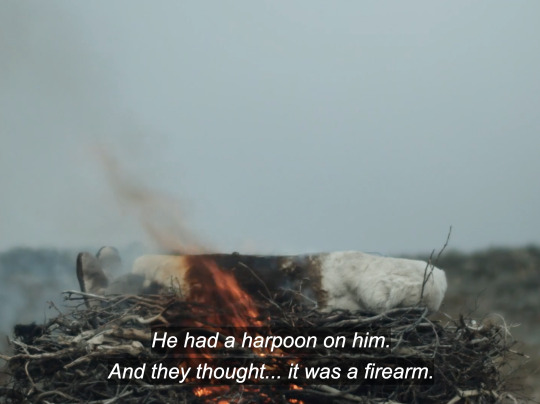
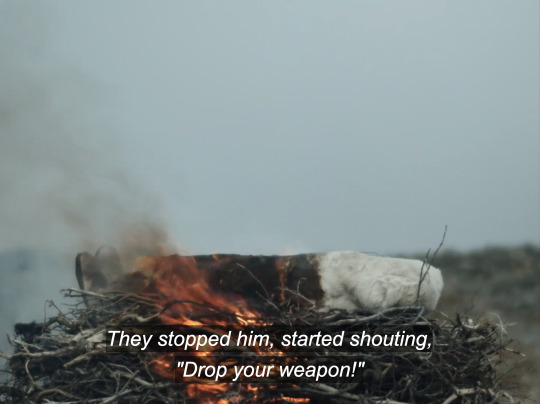

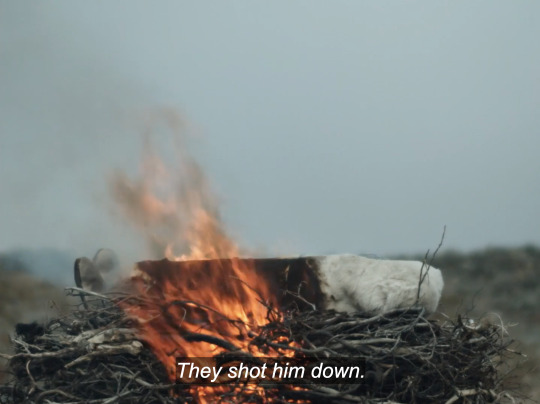
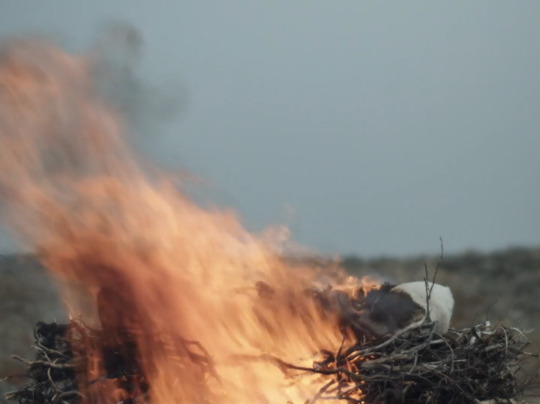
The Whaler Boy (Китобой) dir. Philipp Yuryev (2020)
#film#mine#the whaler boy#kitoboy#chukchi#indigenous film#siberia#siberian film#aesthetic#film stills
51 notes
·
View notes
Text

In December 1984, a group of 3,000 beluga whales were trapped by ice in the Chukchi Sea, near Russia. The whales were confined to small open water ponds surrounded by thick, impassable ice up to 10 feet thick in some areas.
Without access to larger areas of the ocean, the whales had difficulty breathing and were at risk of dying. To help rescue them, an icebreaker named Admiral Makarov was brought in, equipped with a specially reinforced ice-breaking hull. The ship attempted to take the whales to safety by breaking the ice, but the belugas initially refused to follow.
When the crew began playing classical music like Tchaikovsky over the ship's speakers, the whales finally began to follow the Makarov through the narrow open-water channel. This allowed 2,000 whales to reach the unfrozen ocean after a journey of almost 100 miles. The successful rescue effort lasted several days and was later dubbed "Operation Beluga." It was a massive undertaking that involved several countries, including the Soviet Union, the United States, Canada, and Japan.
#operation beluga#canada#japan'united states#soviet union#tchaikovsky#ships#water#music#admiral makarov#whales#baluga whales#Chukchi#russia#nature#fresh air#oceancore
2 notes
·
View notes
Text
youtube
Song: Mon Renne Bien-Aimé de Grands Bois (My Beloved Reindeer has Big Antlers)
Artist: Slava Egorovič Kemlil
Album: Sibérie 3: Kolyma - Chants de nature et d'animaux (Kolyma - Songs of Nature and Animals)
3 notes
·
View notes
Text
Indigenous people in Russia (Siberia)
#indigenous#culture#indigenous russia#indigenous russian#russia#important#fypシ#colonization#fypage#landback#kamchatka#koryak#koryaks#chukchi#indigenous people#indigenous art#indigenas#siberia#siberian indigenous#indigenous siberian#siberian
156 notes
·
View notes
Text

"Chukchi Doll Wearing Fur and Skin Protective Garments Anadyr City Museum Chukotka Russia Far East"
https://www.flickr.com/photos/eriagn/8014499422/
6 notes
·
View notes
Text







I have developed a strange hobby of creating flag designs for ethnic groups and religions.
Here are some examples: Ukrainians, Polish Ukrainians (Ukrainians in Poland), Omnism, Russian Americans (Russians in the United States), Chukchi, Wicca and Hutsul.
What other ethnic groups or religions should we make flags for?
#flag#ukrainians#polish ukrainians#Omnism#russian amerocans#poland#the united states#chukchi#wicca#hutsul
1 note
·
View note
Text






Andreth for @tolkienofcolourweek
Part 30 of toi's indigenous tolkien series
Image description in alt text
#andreth#silmarillion#tolkien women of colour#arctic tolkien#(buryat + chukchi)#moodboards and edits#toi's indigenous tolkien series#tocweek2024#toi's creations#image described
62 notes
·
View notes
Photo
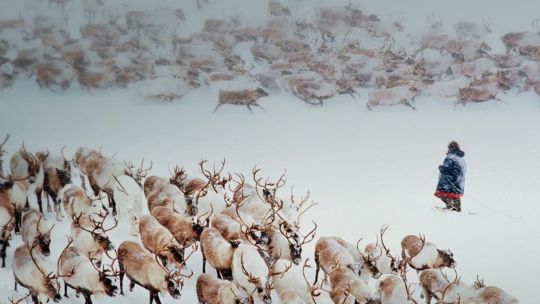
Reindeer and Chukchi reindeer herder in snow of Siberia, Russia
Photographed by Natalie Fobes
238 notes
·
View notes
Text
hot take: i feel like GOT’s portrayal of those living north of the wall could’ve been way better if they respectfully and mindfully included some inspiration from arctic indigenous cultures… like the wildlings have a whole expansive desert to their disposal… just the different clans all spread out and shit… they’re descendants of the first men… they’ve had soooo much time to get real creative culturally… and you’re telling me they’re not doing drum dances??? you’re telling me they don’t have snow goggles????? no dog-sledding??? no blanket tosses??? yeah right.
they’re not landlocked by any means (if the maps i’ve seen are correct) and yet they’re not out hunting whales??? that’s a major source of nutrition in climates like theirs!! and they’re just not about that life, i fucking guess. whatever.
#listen i’m not arctic indingeous#i’m taino and blackfoot and cherokee#but like… as someone who’s indingeous i love learning about other indigenous cultures#inuit culture & chukchi culture & nenet culture are some of my favorites to learn about#feel like the wildlings could’ve really been leveled up if they had taken inspo from those cultures#to be fair it’s been forever since i’ve watched GOT and i didn’t read the books#but STILL
20 notes
·
View notes
